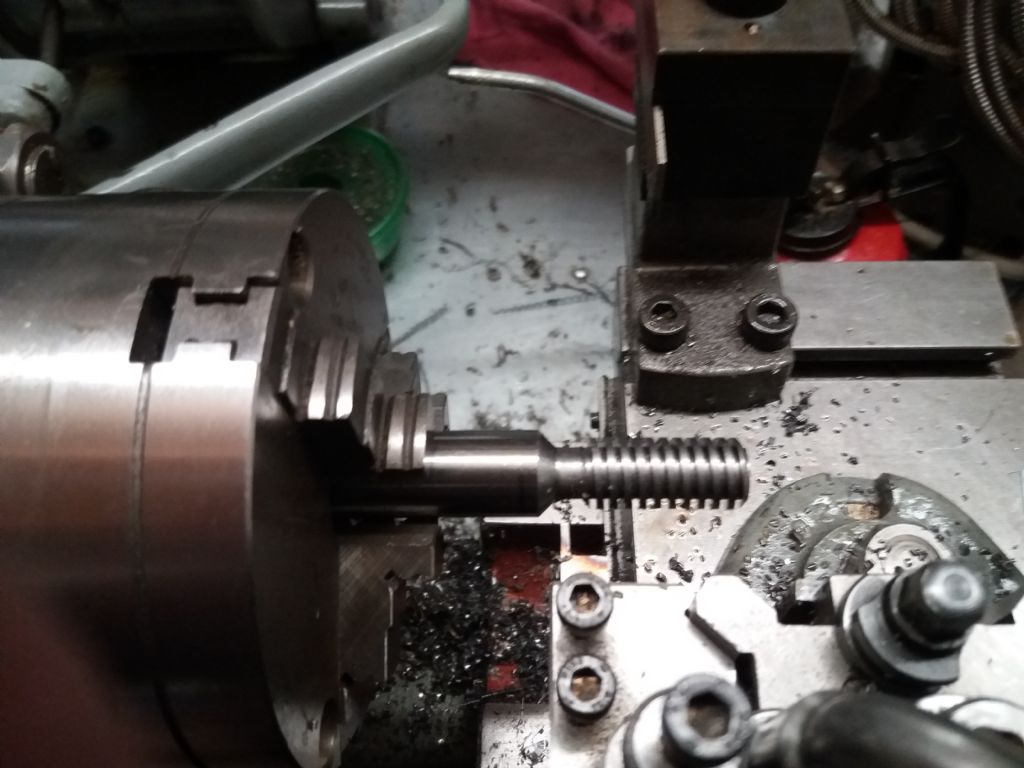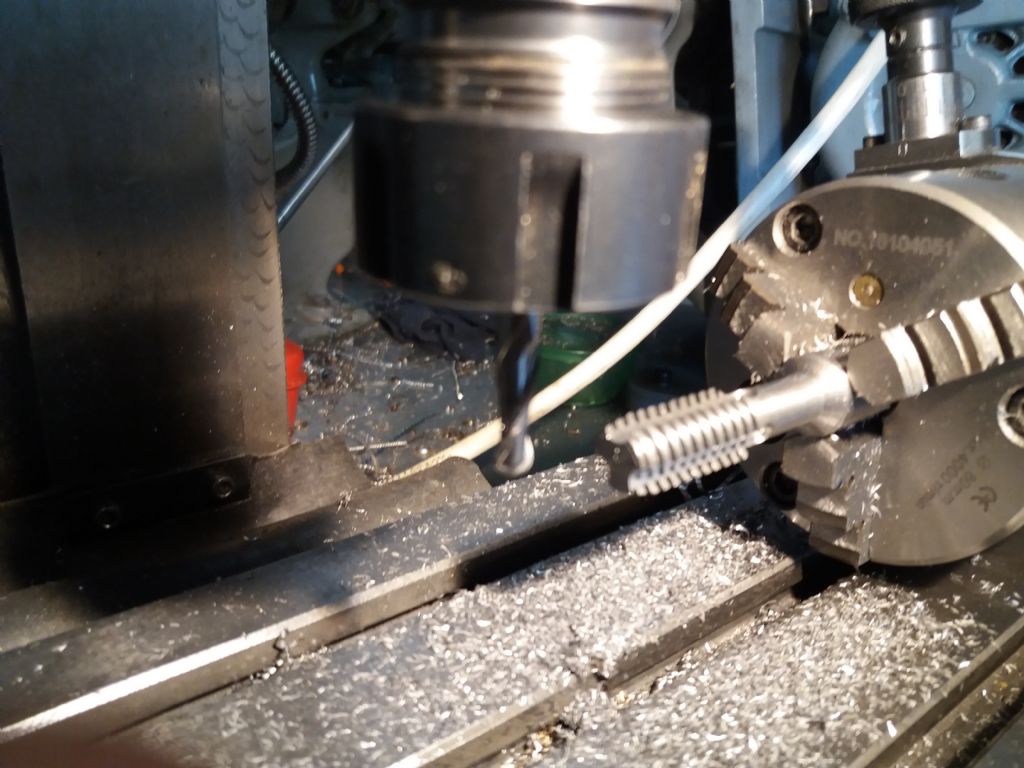I have been asked to repair a piece of farm machinery that utilises a 'bastard' thread form. After managing to slice a part of the unworn threaded male component in half to allow a visual inspection of the 'form', we have come to the conclusion it is an M20 x 8tpi thread with a 'rope' form. Initially I thought it was a badly worn trapezoidal or Acme thread!
I am using a piece of D2 tool steel to make a tap to allow the female thread to be reproduced. I have ground a tool and checked it with a toolmakers microscope to ensure accuracy. What I propose doing is using the tool for making the tap and then for making the replacement 'bolt' (actually a complicated shaft which will be fabricated into the repair, using as much of the original as possible).
It has been many years since I made a tap and my conundrum is whether to thread the tap and then cut the flutes, or cut the flutes and then thread the tap. What do others do? – intuitively I reckon I should thread and then relieve, as the thread will be formed continuously rather than with intermittent cutting (which in D2 will probably deform the front edge of the thread form). Fortunately I have found a formed flute cutter in my collection of Horizontal milling cutters so that will get used, followed by a flute grind op on the Clarkson.
The female thread is in a casting which I will machine out and replace with a top hat bushing. I did consider a more standardised thread form but there is a seal which runs on the shaft and engages with the 'rope' form. These seals are available easily, all other components are not – unless you replace the whole 'unit' at a cost of upwards of £7k – the whole contraption is a £600k cost so it makes sense to keep it operational!
Your views on the operation sequences are welcomed.
Martin
Bob Worsley.






